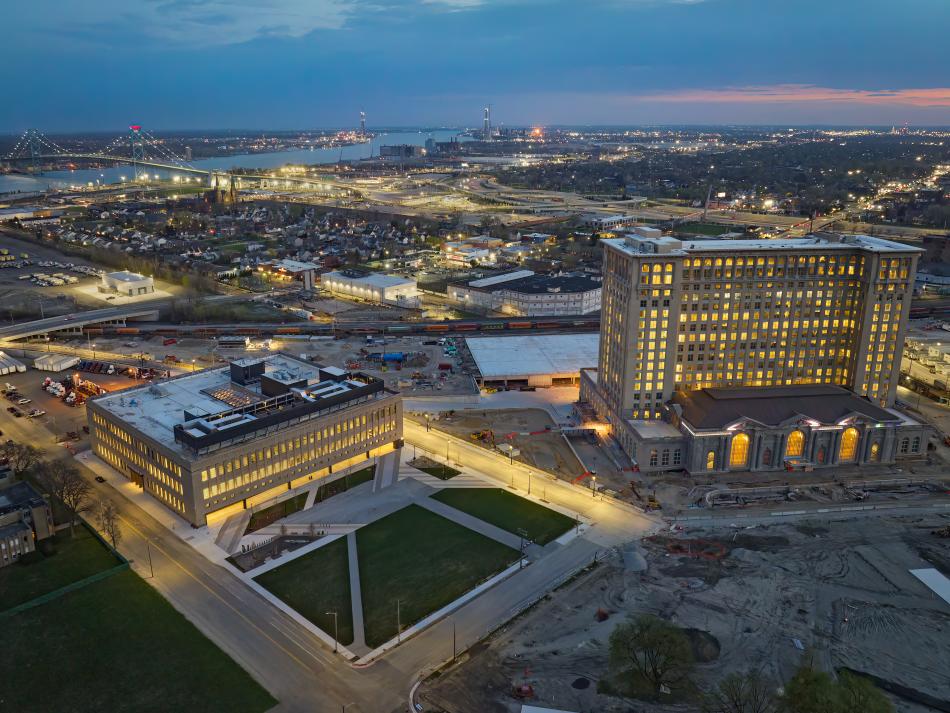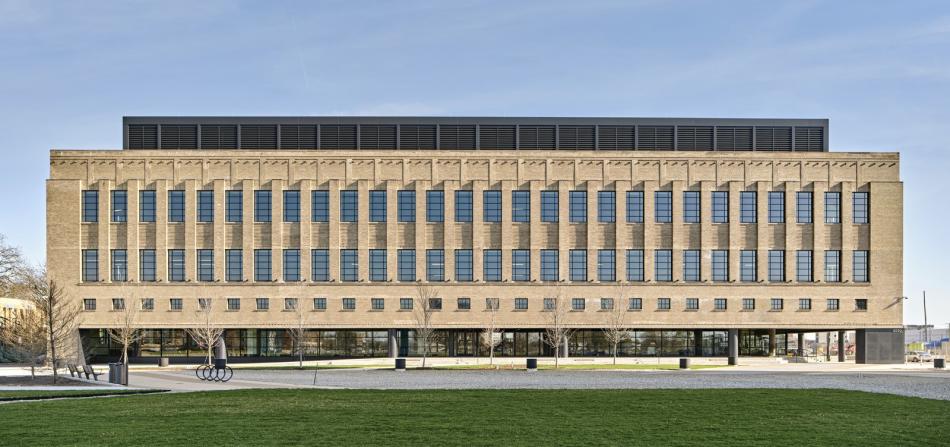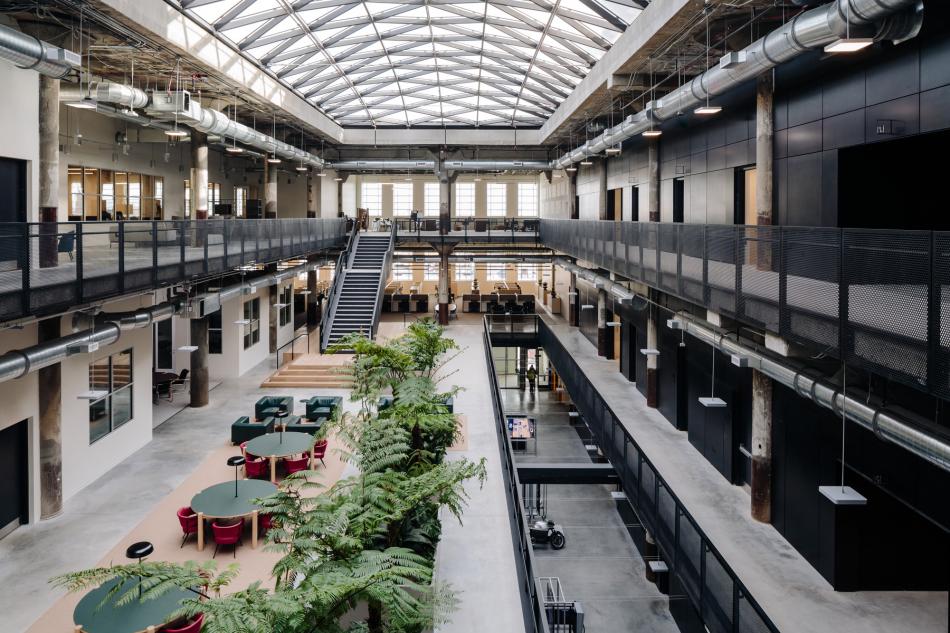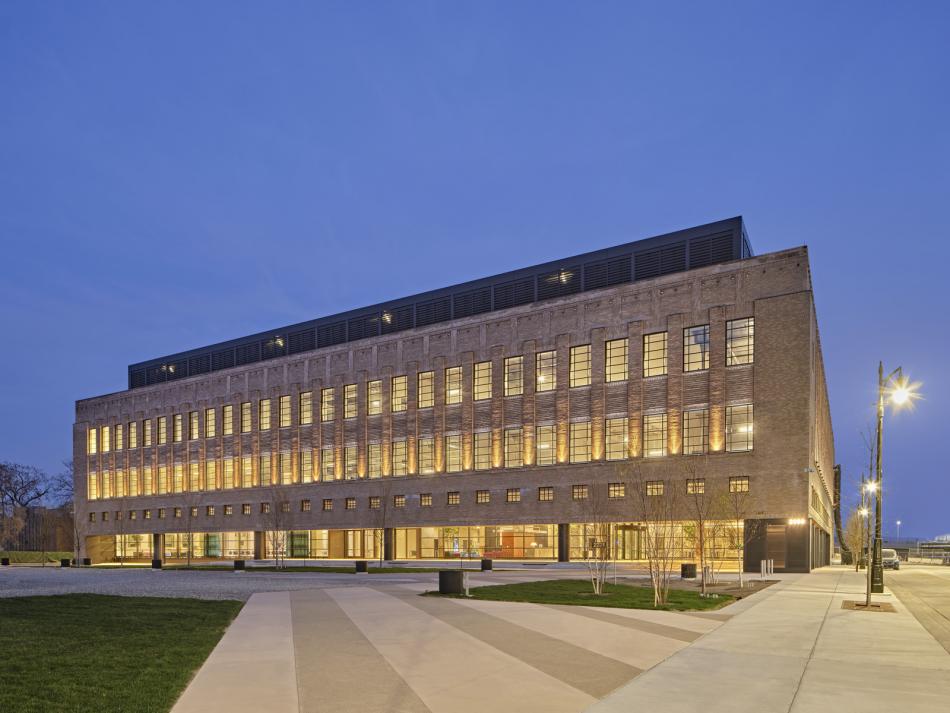The former Book Depository in Corktown reopened last week, and it was likely the first time many people had been in the building. Once the city’s main post office and then the Detroit Public Schools Book Depository, the 1930s Albert Kahn building is now the home of Newlab, where innovators will work on the future of mobility. The thoughtful reimagining was led by Gensler Detroit, who designed the historic building for a new workforce.
In its prime, the building handled mail coming in from the trains at Michigan Central Station. Detroit Public Schools purchased the building in 1961, where it was used for storage. The building had been vacant for 35 years, after a fire left it as a shell in 1987. The Morouns acquired it with Michigan Central in 1995, and it sat empty for decades until Ford purchased the building in 2018. Construction started on the building in early 2021, with Gensler Detroit as Architect of Record, CIVILIAN as Interior Design and Architectural Design Consultant, Ghafari of Dearborn as Interior Architect of Record, and DBI Projects as Project Manager (Newlab).
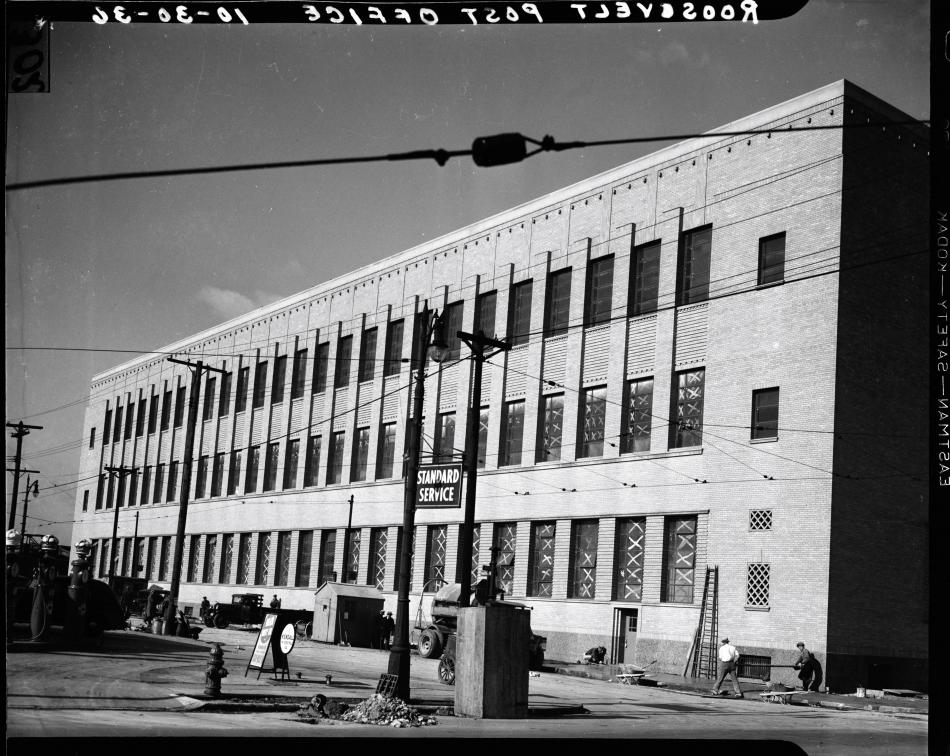 The three-story building that started as a post office in 1936Walter P. Reuther Library, Archives of Labor and Urban Affairs, Wayne State University
The three-story building that started as a post office in 1936Walter P. Reuther Library, Archives of Labor and Urban Affairs, Wayne State University
“The building was in total ruin. It had been open to the elements for decades, so even the structural steel had begun to bend and fall inward,” says Lily Diego, Design Director and Building Transformations Leader at Gensler Detroit. “Reimagining a place in such disrepair is a challenge, but an exciting one. Any retrofit of a historical building is a balance of retaining the integrity of the existing structure and bringing something new to carry it forward. Especially knowing we were restoring a Kahn building, we wanted to be surgical with what we took away and keep as much in place as possible.”
In redesigning the building, the team took many considerations into mind. The workspace needed to be flexible, with a combination of offices, meeting rooms, open areas to meet and share ideas, and space to experiment with new technologies. The team changed a few key areas in the building to accomplish this.
The entryway to the building now has martini columns leading to a glass-front entrance. The same space before this was once the loading docks and boiler room. But for this project, it made more sense to move the entryway here, welcoming people from the park, plazas, and train station.
“The space where the boiler room used to be is the North/Northeast portion of the building; it faces toward Roosevelt Park, Michigan Avenue, and the rest of the development,” says Diego. “It was a natural place to create the bulk of the porosity of the building, allowing it to connect toward the campus. We were also able to leverage the existing cutout for the original loading docks to create the ‘paseo’ that spills beyond the entry.”
Another very noticeable feature within the building is the use of natural light, something that was missing before. Part of the middle of the building was taken out, opening up a three-story space that includes areas to work and congregate. The team also added large stairways to visibly connect the floors and bring people together. A new glass atrium adds ample light into the building, whereas before natural light could only be found on the perimeter.
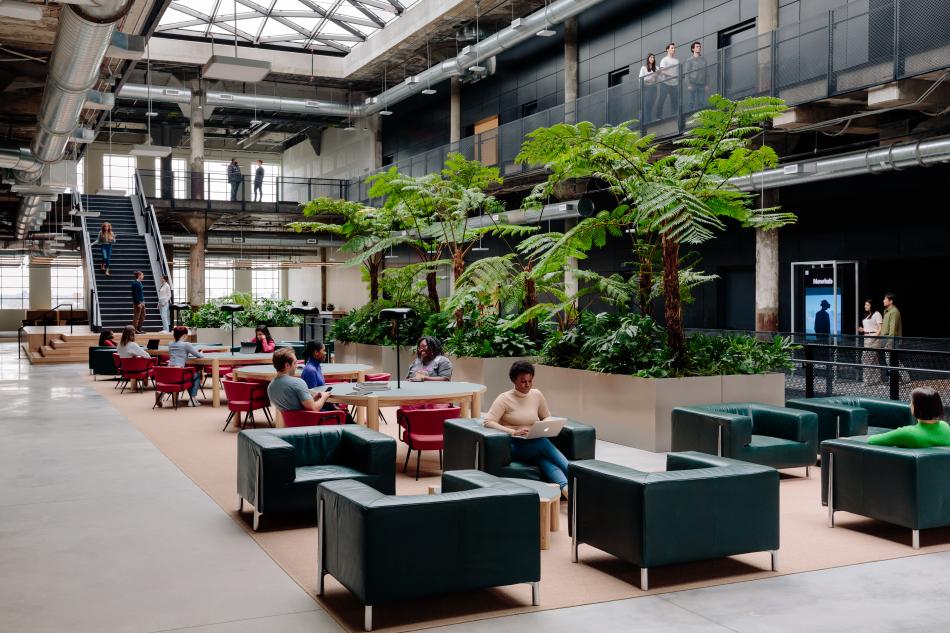 The reimagined interior of the Book Depository, with an airy atrium, greenery, and areas to sit. Brian Ferry
The reimagined interior of the Book Depository, with an airy atrium, greenery, and areas to sit. Brian Ferry
“Access to sunlight is so important, especially as worker’s expectations of the office continue to shift toward well-being,” says Diego. “Because the building is quite large, but square, the best way to bring the connection to outdoors is to penetrate the center and flood the space with natural light.”
Newlab has brought in 150 members from 25 companies; altogether, these companies have raised more than $500 million in venture capital funding. The 270,000-square-foot building is now home to 270,000 square feet, with a 2,000 square feet of exhibition space, a 200-seat event space, an 11,000-square-foot robotics and prototyping facility, and two open studio spaces.
The Book Depository is part of the overall mobility campus Ford is building at Michigan Central. A parking structure-the Bagley Mobility Hub-sits across Bagley with a walkway connecting it to the Book Depository. Next to the Mobility Hub, the Southwest Greenway will open later this month. Work is ongoing to recreate Roosevelt Park into more of a public gathering space. And later this year, Michigan Central Station will reopen for the first time in decades.
See below for before and after photos of the Book Depository.
- Photographer for exterior after photos: Jason Keen
- Photographer for interior after photos: Brian Ferry
- Before photos provided by Gensler






